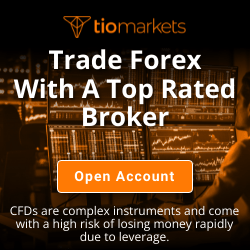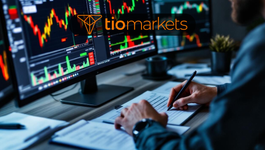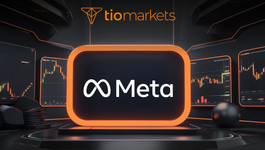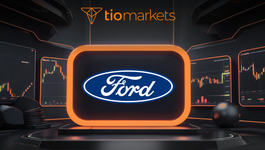What is CFD Trading?
BY TIOmarkets
|May 14, 2024Introduction to CFD Trading
Contracts for Difference (CFD) trading is a popular and versatile form of trading that allows investors to speculate on the price movement of various financial instruments without owning the underlying assets. In this article, we will explore the fundamentals of CFD trading, its history, how it works, as well as its benefits and risks. We will also discuss key strategies and terms associated with CFD trading, and compare it to traditional trading methods.
What is CFD Trading?
CFD trading is a derivative trading method where investors enter into a contract with a broker to exchange the difference in the value of an instrument between the time the contract is opened and closed. Instead of owning the actual asset, traders are simply speculating on the price movements – whether it will go up or down. This enables traders to profit from both rising and falling markets.
Brief History of CFD Trading
CFD trading was introduced in the early 1990s in the United Kingdom by a company called IG Group. It was initially designed to provide a more accessible way for retail traders to trade shares without owning them. Over the years, CFD trading expanded to include other types of financial instruments such as indices, commodities, currencies, and cryptocurrencies.
How CFD Trading Works
CFD trading involves two parties – the trader and the broker. The trader speculates on the price movement of an instrument, while the broker provides the platform and acts as the counterparty to the trade. To open a CFD trade, the trader must deposit a margin amount, which serves as collateral and allows for leveraged trading. The trader can choose to go long (buy) or go short (sell) on an instrument, depending on their market expectations.
When the trade is closed, the trader either receives or pays the difference between the opening and closing price of the instrument, multiplied by the number of CFD units traded. Profits and losses are realized in real-time, making CFD trading a dynamic and potentially profitable form of trading.
Understanding Contracts for Difference (CFDs)
Contracts for Difference, as the name suggests, are contractual agreements between the trader and the broker. CFDs are derivatives that derive their value from the underlying asset. Unlike traditional trading, where physical ownership of the asset is required, CFDs provide a more accessible way to gain exposure to various markets.
CFDs are traded on margin, which means traders only need to deposit a fraction of the total trade size. This allows for leverage, which amplifies potential profits but also increases the risk of losses. Traders can open positions that are larger than their initial investment, giving them the opportunity to magnify their returns.
Key Components of a CFD Trade
When entering into a CFD trade, there are several key components to consider:
- Underlying Instrument: CFDs can be based on various financial instruments, including stocks, indices, commodities, currencies, and cryptocurrencies. Traders can choose from a wide range of markets to suit their trading preferences.
- Margin: Traders need to deposit a margin amount to open a CFD trade. The margin requirement varies depending on the instrument and the broker, but generally ranges from 1% to 20% of the total trade size.
- Entry and Exit Points: Traders need to determine the price levels at which they will enter and exit the trade. This can be based on technical analysis, market news, or other factors that may influence the instrument's price.
- Stop-Loss and Take-Profit Orders: Traders can set stop-loss and take-profit orders to manage their risk and ensure they don't miss out on potential profits. Stop-loss orders automatically close the trade if the price moves against the trader's position, while take-profit orders lock in profits when the price reaches a specified level.
Types of Assets Traded as CFDs
CFDs provide access to a wide range of financial instruments. Some of the most common assets traded as CFDs include:
- Stocks: Traders can speculate on the price movements of stocks without owning the shares. This allows for flexibility and the potential to profit from both rising and falling markets.
- Indices: CFDs on indices enable traders to gain exposure to entire stock market indices, such as the S&P 500 or FTSE 100. This allows traders to diversify their portfolios and trade on the overall performance of a market rather than individual stocks.
- Commodities: CFDs on commodities include precious metals like gold and silver, energy products like crude oil and natural gas, as well as agricultural products like wheat and corn. Traders can take advantage of price movements in these markets without the need for physical ownership.
- Currencies: CFDs on currencies allow traders to speculate on the exchange rate between two currencies. This provides opportunities to profit from fluctuations in the forex market, the largest and most liquid market in the world.
- Cryptocurrencies: CFDs on cryptocurrencies enable traders to speculate on the price movements of digital currencies like Bitcoin, Ethereum, and Litecoin. This allows traders to trade cryptocurrencies without the need for a digital wallet or ownership of the actual tokens.
Benefits of CFD Trading
CFD trading offers several advantages compared to traditional trading methods:
- Leverage: CFD trading allows traders to amplify their potential profits through leverage. By only depositing a fraction of the total trade size, traders can open larger positions and potentially earn higher returns.
- Inverse Trading: CFDs allow traders to profit from both rising and falling markets. Going long (buying) on an instrument allows traders to benefit from price increases, while going short (selling) enables them to profit from price declines.
- Access to Diverse Markets: CFD trading provides access to various markets, including stocks, indices, commodities, currencies, and cryptocurrencies. Traders can diversify their portfolios and take advantage of different market conditions.
- Flexibility: CFDs offer flexible trading options, including the ability to trade on margin, open and close positions quickly, and set stop-loss and take-profit orders to manage risk effectively.
- No Ownership Required: CFD traders do not need to own the underlying asset to trade. This eliminates the complexities and costs associated with physical ownership, such as storage, transport, and maintenance.
Risks of CFD Trading
While CFD trading offers significant potential for profits, it also carries risks:
- Leverage Risk: The use of leverage in CFD trading can magnify both profits and losses. While leverage can enhance returns, it can also expose traders to significant losses if the market moves against their position.
- Market Volatility: Financial markets are subject to volatility, and prices can change rapidly. Sudden price movements can result in significant losses for CFD traders.
- Counterparty Risk: In CFD trading, traders rely on the broker to fulfil their trades. If the broker fails to meet its obligations, such as providing liquidity or executing trades, it can result in financial losses for the trader.
- Overtrading: CFD trading can be fast-paced and highly accessible, which can lead to overtrading. Overtrading can result in increased transaction costs, emotional stress, and potentially diminished returns.
How to Start Trading CFDs
To start trading CFDs, follow these steps:
- Educate Yourself: Learn about CFD trading, market analysis, risk management, and trading strategies. Familiarize yourself with the platform and tools offered by your chosen broker.
- Choose a Reliable Broker: Select a reputable broker that offers a user-friendly trading platform, competitive pricing, a wide range of instruments, and strong customer support.
- Open an Account: Complete the account opening process by providing the necessary personal information and funding your trading account.
- Develop a Trading Plan: Define your trading goals, risk tolerance, and preferred trading strategy. Consider factors such as timeframes, market analysis techniques, and risk management rules.
- Practice with a Demo Account: Most brokers offer demo accounts that allow you to practice trading without risking real money. Use this opportunity to familiarize yourself with the platform and test your trading strategy.
- Start Trading with Real Money: Once you feel comfortable and confident with your trading strategy, you can start trading with real money. Start with a small amount and gradually increase your position size as you gain experience.
- Monitor and Adapt: Continuously monitor your trades, track your performance, and adapt your strategy as necessary. Learn from both your successful and unsuccessful trades to improve your trading skills.
Key Strategies for CFD Trading
Successful CFD trading requires a well-defined trading strategy. Here are some key strategies to consider:
- Technical Analysis: Analyze historical price data, charts, and technical indicators to identify patterns and trends. Technical analysis can help predict future price movements and inform entry and exit points.
- Fundamental Analysis: Evaluate the financial health, industry trends, and economic factors that may impact an instrument's price. Fundamental analysis involves studying company financial reports, news events, and economic data.
- Risk Management: Implement risk management techniques to protect your capital and minimize losses. This may include setting stop-loss orders, diversifying your portfolio, and avoiding excessive leverage.
- Trading with the Trend: Identify the prevailing market trend and trade in the direction of that trend. Trading with the trend increases the probability of success and reduces the risk of being on the wrong side of the trade.
- Keeping Emotions in Check: Emotions can influence trading decisions and lead to irrational behavior. Maintain discipline, stick to your trading plan, and avoid making impulsive decisions based on fear or greed.
Common Terms in CFD Trading
When trading CFDs, you may come across the following terms:
- Spread: The difference between the buy and sell price of an instrument. It represents the cost of the trade and is how brokers make money.
- Leverage: The ability to control a larger position in the market with a smaller initial investment. Leverage allows traders to amplify potential profits, but also increases the risk of losses.
- Long Position: A trader takes a long position when they expect the price of an instrument to rise. They buy the instrument with the intention of selling it at a higher price in the future.
- Short Position: A trader takes a short position when they expect the price of an instrument to fall. They sell the instrument with the intention of buying it back at a lower price in the future.
- Margin Call: When the trader's account equity falls below the required margin level, they may receive a margin call from the broker, requiring them to either add more funds or close their positions to meet the margin requirements.
CFD Trading vs. Traditional Trading
There are several key differences between CFD trading and traditional trading:
- Ownership: In traditional trading, investors own the underlying asset. In CFD trading, investors do not own the underlying asset but speculate on its price movement.
- Leverage: CFD trading offers leverage, allowing traders to control a larger trading position with a smaller initial investment. Traditional trading typically doesn't offer the same level of leverage.
- Short Selling: CFD trading allows traders to take short positions and profit from falling markets. Traditional trading may have limitations on short selling or borrowing assets.
- Coverage: CFD trading provides access to a wide range of markets and instruments. Traditional trading may have limitations based on geographical location and exchange regulations.
- Costs: CFD trading may have lower transaction costs compared to traditional trading, as it eliminates some of the fees associated with physical ownership, such as custody and transfer fees.
Conclusion
CFD trading is a versatile and accessible form of trading that allows investors to speculate on the price movement of various financial instruments without owning the underlying assets. Traders can profit from both rising and falling markets, diversify their portfolios, and take advantage of leverage. However, it is important to understand the risks involved, such as leverage risk and market volatility. By developing a trading plan, employing effective risk management techniques, and continually educating oneself, individuals can increase the likelihood of success in CFD trading.
Start Your CFD Trading Journey with TIOMarkets
Ready to take the leap into the world of CFD trading? Join TIOMarkets, a top-rated Forex broker with over 170,000 accounts opened across more than 170 countries. Our online trading platform offers you the opportunity to trade over 300 instruments across 5 markets, including Forex, indices, stocks, commodities, and futures, all with low fees. Plus, enhance your trading skills with our comprehensive suite of educational resources and step-by-step guides.
Take the first step towards becoming a proficient CFD trader by creating a trading account with TIOMarkets today.

Risk disclaimer: CFDs are complex instruments and come with a high risk of losing money rapidly due to leverage. You should consider whether you understand how CFDs work and whether you can afford to take the high risk of losing your money. Never deposit more than you are prepared to lose. Professional client’s losses can exceed their deposit. Please see our risk warning policy and seek independent professional advice if you do not fully understand. This information is not directed or intended for distribution to or use by residents of certain countries/jurisdictions including, but not limited to, USA & OFAC. The Company holds the right to alter the aforementioned list of countries at its own discretion.
Join us on social media

Behind every blog post lies the combined experience of the people working at TIOmarkets. We are a team of dedicated industry professionals and financial markets enthusiasts committed to providing you with trading education and financial markets commentary. Our goal is to help empower you with the knowledge you need to trade in the markets effectively.
Related Posts





